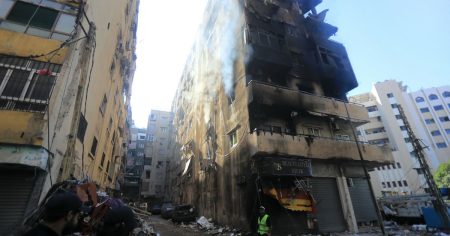A devastating landslide hit three villages in rural Papua New Guinea, killing at least three people and burying hundreds under rubble and debris. The death toll was expected to rise significantly due to the densely populated area and the high traffic corridor where the disaster occurred. Local officials described the situation as a humanitarian disaster of biblical proportions, appealing for help and support to address the crisis. Rescue efforts were hindered by unstable rubble, heavy rain, and the highlands region’s susceptibility to landslides.
The landslide struck the villages around 3 a.m., catching residents off guard and burying at least 60 homes under up to 20 feet of debris. The main thoroughfare, Porgera Highway, was also inundated by the landslide, further complicating rescue and relief efforts. The area is populated by subsistence farmers in Papua New Guinea’s highlands region, where smaller landslides have occurred frequently in recent months. The continuous wet weather contributed to the disaster, with heavy rain forecasted to persist in the coming days.
Local authorities and international organizations mobilized to provide assistance, with the country’s defense forces joining the rescue operations. The highlands region was known for its challenging terrain and limited infrastructure, making rescue operations more difficult. The area served as a transport node for people from remote villages who relied on public motor vehicles for transportation, possibly increasing the number of casualties. A popular drinking club also attracted visitors from the district, adding to the complexity of the situation.
Estimates of the death toll varied, with the local Community Development Association president suggesting that at least 300 people could have perished in the landslide. The scale of the disaster was unprecedented in the region, underscoring the urgent need for assistance and resources to address the humanitarian crisis. The affected villages were home to nearly 4,000 residents, many of whom were likely trapped or injured by the landslide. The devastating impact of the disaster highlighted the vulnerability of communities in remote and underserved areas, where environmental risks could lead to catastrophic events like this landslide.
As rescue and recovery efforts continued amidst challenging conditions, the focus remained on locating survivors, providing medical care to the injured, and addressing the immediate needs of the affected communities. International support and cooperation were crucial in responding to the disaster, leveraging resources and expertise to ensure an effective and coordinated relief operation. The loss of lives, homes, and livelihoods in the landslide underscored the importance of disaster preparedness and risk mitigation measures in vulnerable regions like the highlands of Papua New Guinea. The tragic event served as a stark reminder of the fragility of life in the face of natural disasters and the resilience of communities coming together in times of crisis.











